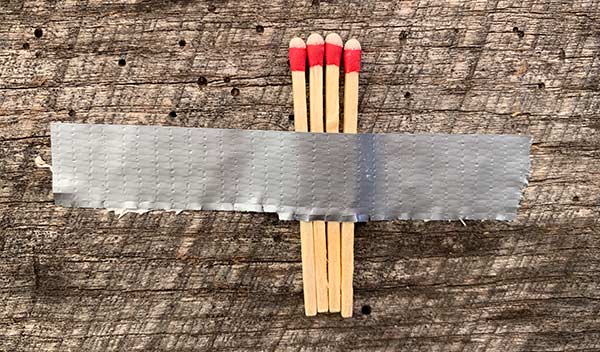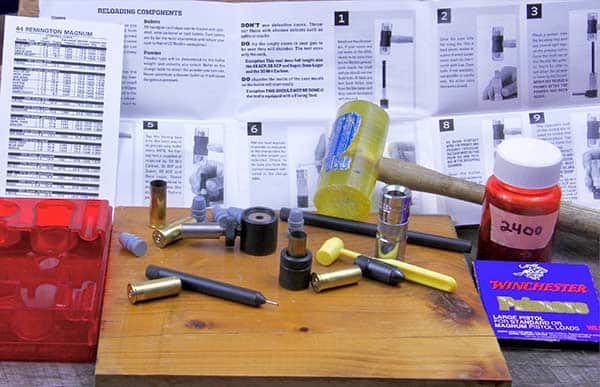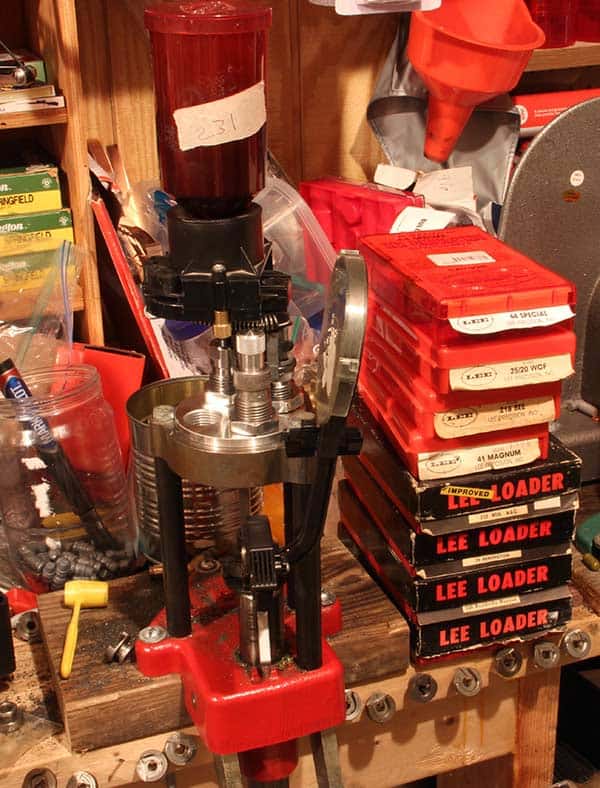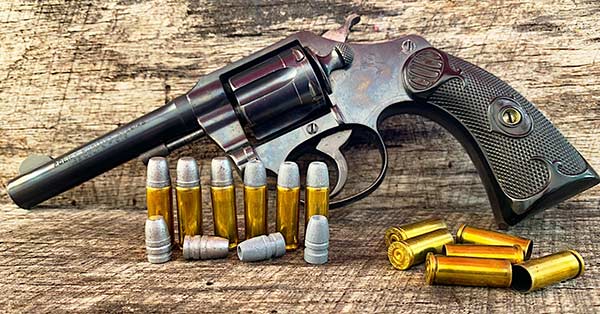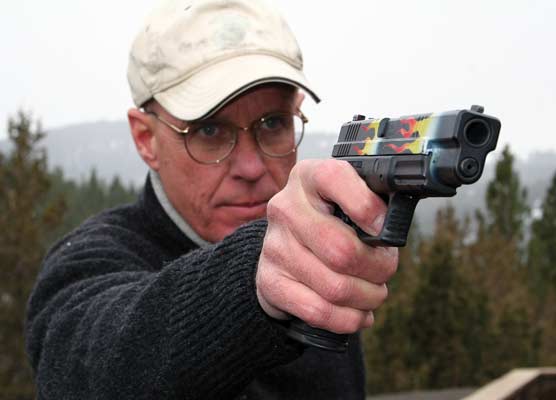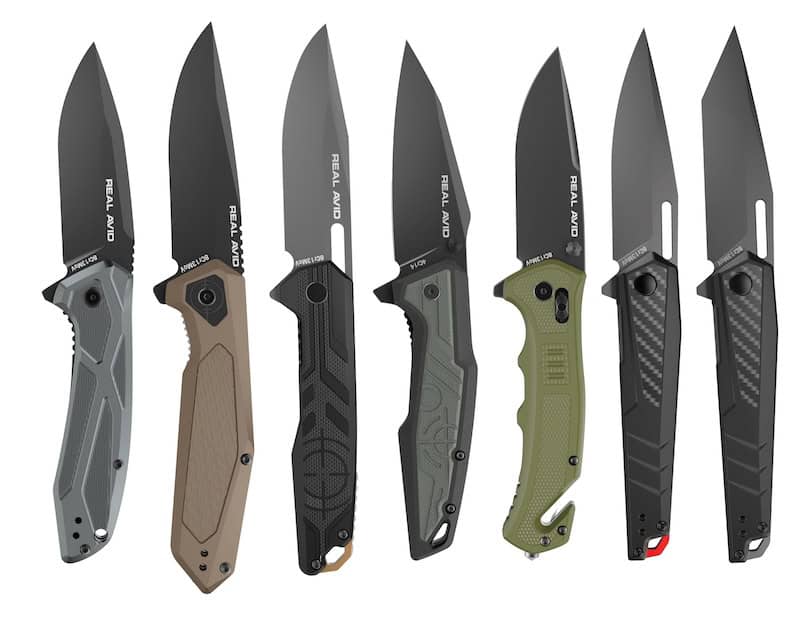Matches, Switches &
Handloading Niches
The thin willow switch I handpicked for grandma stings like the blazes, warming my dodging derriere. At 5 years old, I was dancing the dance boys my age knew all too well, consisting of sprinting in circles, hips thrust forward, trying to keep distance from the switch. But this wasn’t Grandma’s first rodeo —or mine! She held my hand, pivoting in circles, as I tried to escape her reach with the sleek switch onto my bum. We were dancing the age-old dance of discipline.
First Offense?
My crime? Playing with Strike Anywhere matches while burning the trash, my daily chore when visiting. It’s not the fire that fascinated me. Rather, it was the matches themselves. The question echoed in my head, “What the heck makes those matches work?” This sparked my curiosity, and I wanted to dig deeper.
Fortunately, the switch’s sting didn’t deter my young, inquisitive mind. Besides, back in those days, my rump was well-conditioned from numerous hide tannings. Besides, it didn’t hurt. It was more for show than anything else.
Reactionary Target?
It wasn’t much longer before I figured out Strike Anywhere matches make dandy reactionary targets. Using my Crossman 760 pump BB gun, I’d tape three or four matches next to each other on a board. Then, I’d aim at the top of the match. All you had to do was hit the white match tip with the BB, and the complex chemical reaction made a pleasing fire.
Granted, it wasn’t a common occurrence, but it did work when you hit the match tip just right. Low shots snapped the matchsticks, while high and wide left the matches safe. Aim small, miss small … aim right, fire bright!
How It Happens
If you’re curious, the scientific chemical reaction is written below. If not, jump to the next paragraph.
“Strike Anywhere matches are made of slow burning white aspen sticks dipped in mono ammonium phosphate, a fire retardant, so you don’t burn your fingers. The magical white tip is powdered glass, which creates friction when ‘struck’ on practically anything. This friction ignites potassium chlorate, which in turn releases oxygen and ignites phosphorus sequisulfide, which burns hot enough to catch the white aspen stick on fire. The secret sauce is potassium dichromate, a highly combustible oxidizer that accelerates burn rate.” Simple stuff, right?
A Progression
I never fully got over my fascination with chemical reactions. I liked things that created energy or went bang. An interest in guns and handloading was the natural progression from BB guns and the chemical reaction of Diamond Strike Anywhere matches. I’d venture to say smokeless powder and primers use some of the same chemicals as strike-anywhere matchsticks.
Rolling Your Own
Handloading, like Strike Anywhere matches, gives you freedom. You will no longer depend on store-bought ammo. After the initial investment in basic equipment, you’re home free for economical, accurate ammo.
As the joke goes, you won’t save a dime handloading; you’ll merely shoot a helluva lot more. Shooting ammunition loaded by lonesome is very self-satisfying. While instilling pride and satisfaction, it provides independence with your newfound skill.
The Basics
A cartridge is nothing more than a measured amount of smokeless powder dumped in a brass case that’s ignited with a primer. The ensuing burn rate of the powder releases gases, creating pressure. This pressure builds until the projectile (bullet) is forced out of the case and down the barrel. Pretty basic, right?
Reloading manuals are nothing more than cookbooks with different recipes for different calibers. Do you want to load ammunition for your favorite rifle or handgun? Look up your cartridge and check your options. What powder and primers do you have? What bullets do want to shoot? Look it up in the book!
Remember, any change in components can spike pressure. Spiked pressures can lead to a blown-up gun. Just follow the load book, and you’ll be fine.
Keep ‘Em Fed
Besides saving money or shooting more, handloading allows you to fine-tune loads for your guns. I can’t tell you how many times I’ve “saved” guns with handloads. Some guns just won’t shoot factory ammo accurately, but once handfed handloads, they become top performers.
Feeding long discontinued calibers in grandpa’s favorite pistol or deer rifle may lead you down the path as the only way to make it go bang. Handloading is a handy skill to have for any serious shooter.
Cogitate
Think it over. Get yourself a single-stage press, dies, a scale, some powder, and primers, save your brass, think about the type of bullets you like, and become your own ammo factory. You’ll learn a lot while getting self-satisfaction by fine-tuning loads for your guns. You can either shoot more or save money. The choice is yours.
Once you feel comfortable with handloading, you can start thinking about casting your own bullets. This is the true gateway to handloading independence and variety.


